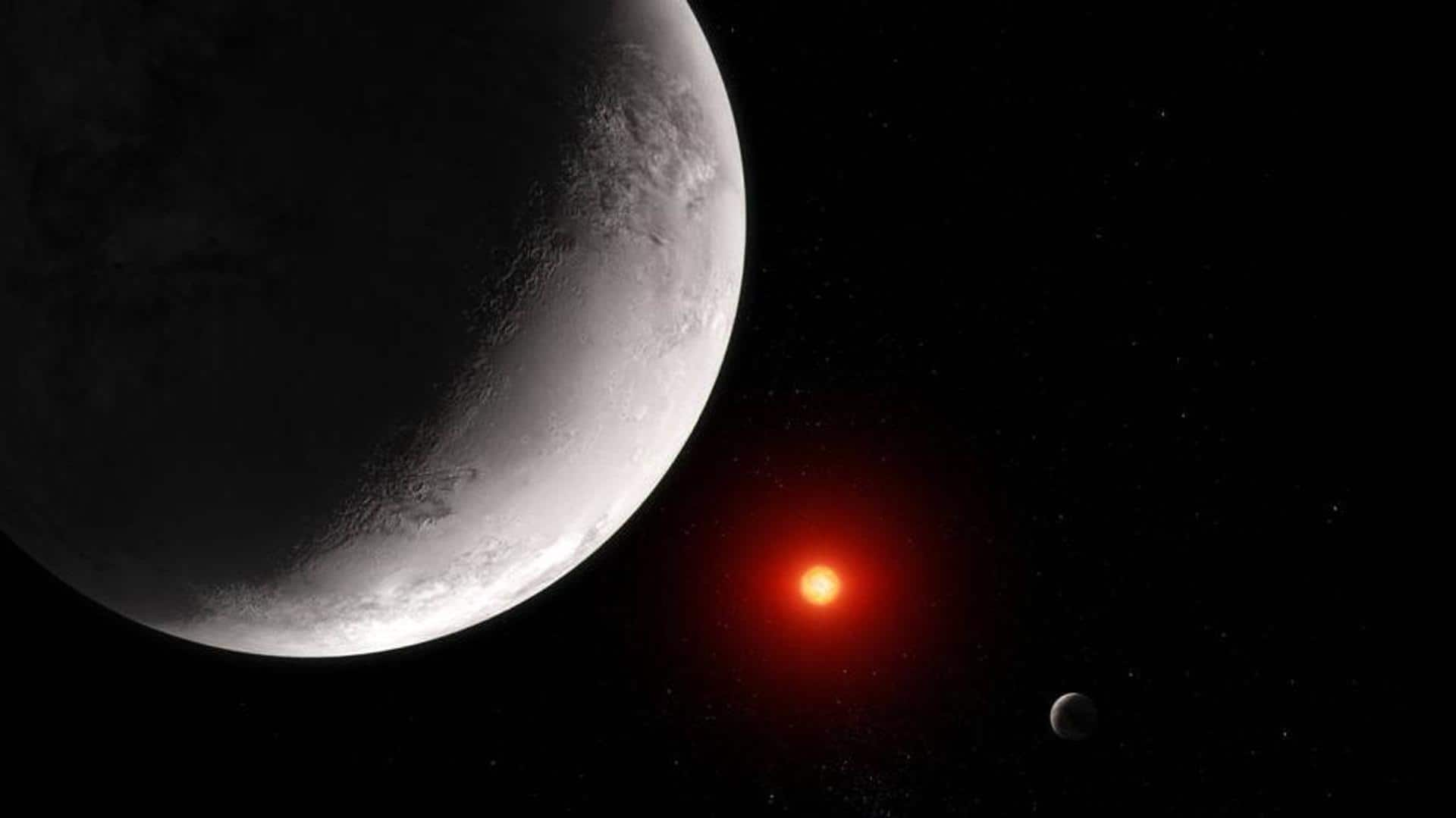
NASA's James Webb peers into the atmosphere of rocky exoplanet
What's the story
About 40 light-years away, a planetary system consisting of seven rocky exoplanets orbiting a single star, called TRAPPIST-1, has particularly intrigued scientists. Now, using NASA's James Webb Space Telescope, the researchers calculated the amount of heat energy emitted by one of the exoplanets in this system called TRAPPIST-1 c. The findings suggest the exoplanet could have an "extremely thin" atmosphere, devoid of carbon dioxide.
Context
Why does this story matter?
The TRAPPIST system, since it was discovered in February 2017, has been subjected to periodic observations with ground and space-based telescopes including Hubble and Spitzer. In fact, according to NASA, it is the most studied planetary system, apart from our solar system. With the Webb telescope, astronomers are now able to get a better look at these distant alien worlds.
Finding
TRAPPIST-1 c exoplanet's dayside temperatures reach about 107 degrees Celsius
The dayside temperatures on the TRAPPIST-1 c exoplanet are found to go up to 106.85 degrees Celsius. Despite these scorching high temperatures, TRAPPIST-1 c ranks as the coolest rocky exoplanet which has been characterized based on thermal emission, said NASA in a blog post. The precision involved in these observations stands as a testament to Webb's remarkable capability of characterizing rocky exoplanets.
Process
TRAPPIST-1 c lies 2.4 million kilometers from its host star
The TRAPPIST-1 c exoplanet lies about 2.4 million kilometers from its host star, TRAPPIST-1 and takes just 2.42 Earth days to complete an orbit. TRAPPIST-1 is a red dwarf star, which is the most common type of star in the galaxy. Astronomers do not know as yet if planets orbiting red dwarf stars contain atmospheres needed to support life.
Official words
With Webb, astronomers can look at atmospheres dominated by CO2
"We want to know if rocky planets have atmospheres or not," said Sebastian Zieba, from Max Planck Institute for Astronomy in Germany and the first author of the corresponding study published in Nature. "In the past, we could only really study planets with thick, hydrogen-rich atmospheres. With Webb we can finally start to search for atmospheres dominated by oxygen, nitrogen, and carbon dioxide."
Information
TRAPPIST-1 c was considered to be a Venus analog
Astronomers assumed TRAPPIST-1 c was like Venus. The exoplanet receives a similar amount of radiation from its host star as Venus gets from the Sun, and was thought to possess a thick carbon dioxide atmosphere like Venus. However, that is not the case.
Process
The exoplanet could be a bare world without any atmosphere
Webb's data reveals it is unlikely that the TRAPPIST-1 c exoplanet is a "true Venus analog" with a thick carbon dioxide atmosphere. NASA mentions that though Webb's observations do not give "definitive information about the nature of TRAPPIST-1 c," they help close down on possibilities. One of the possibilities is that the exoplanet is a bare rocky world with hardly any atmosphere.